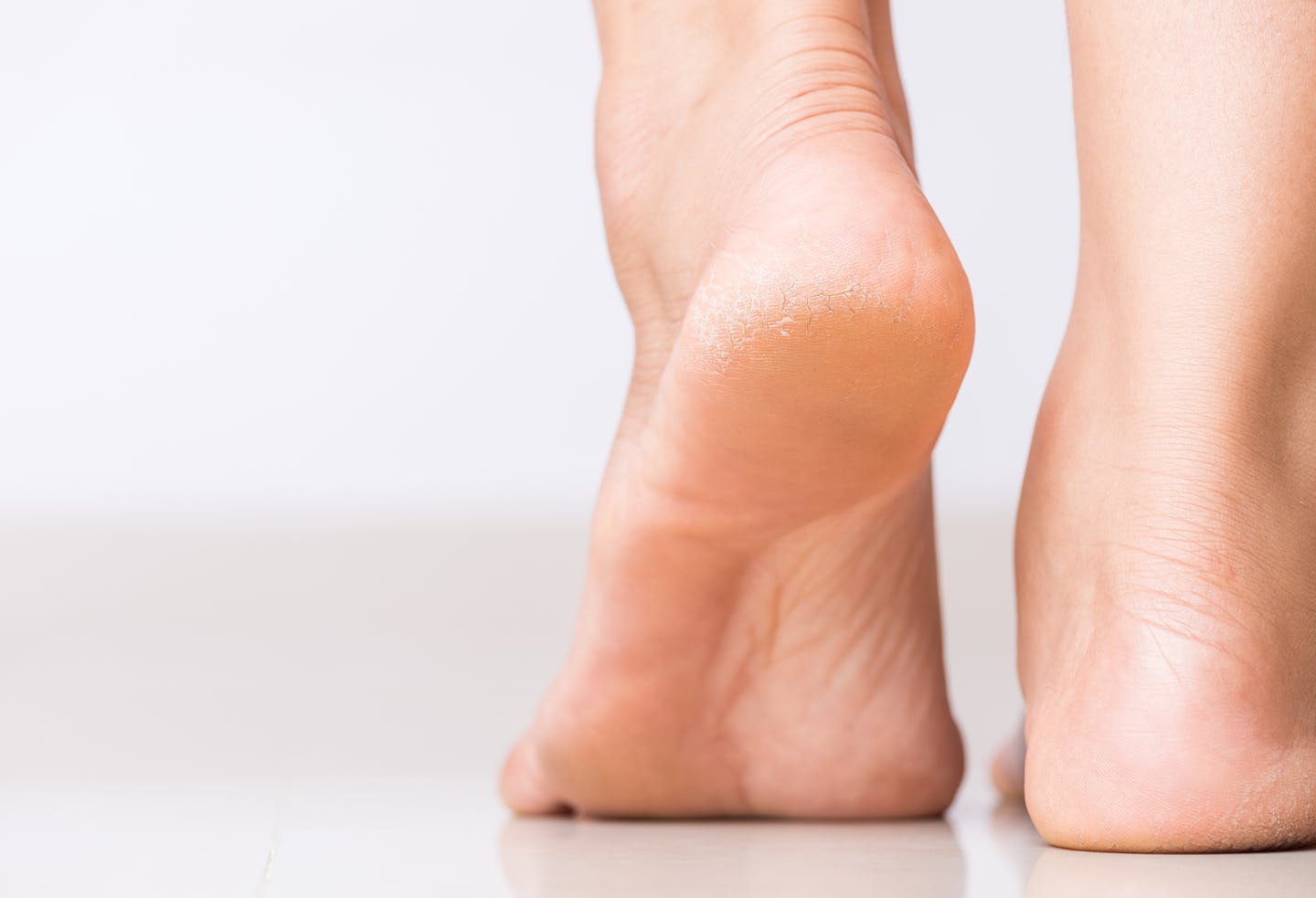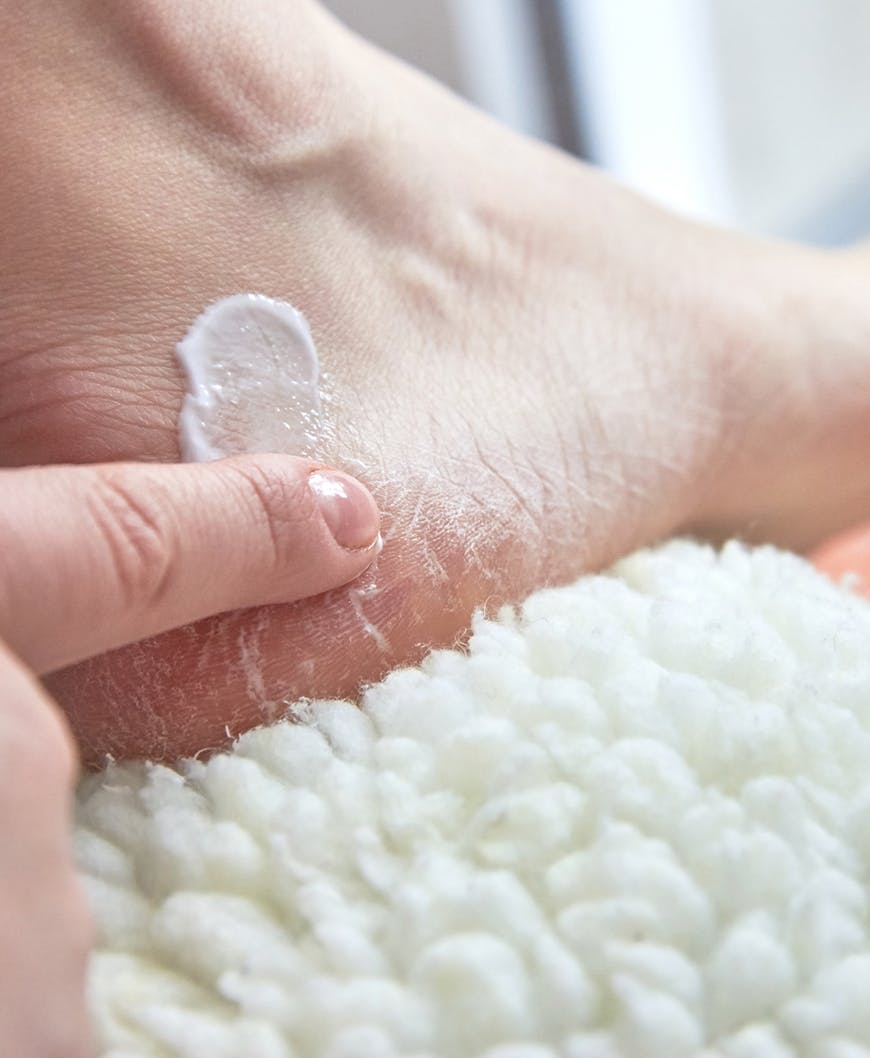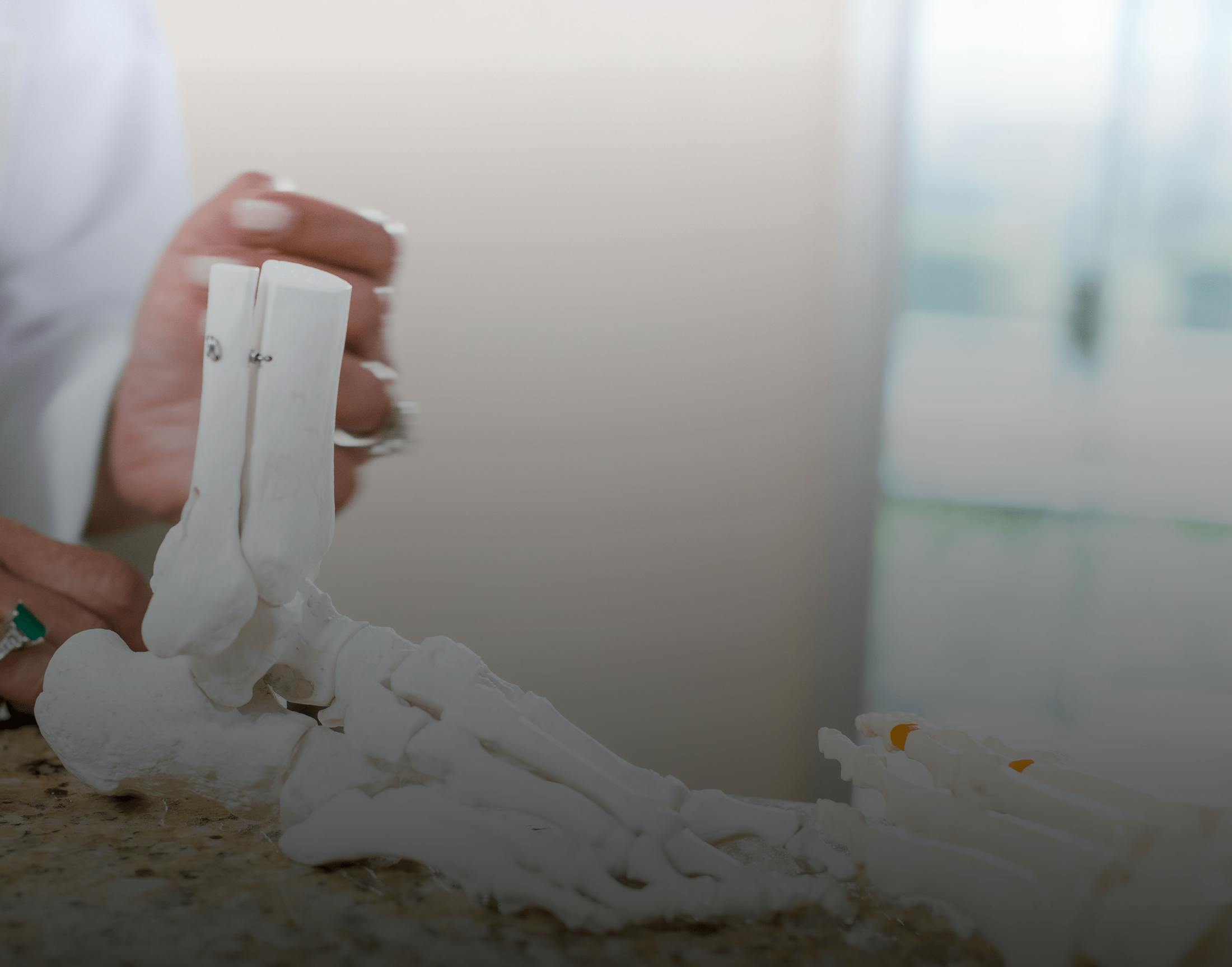Fissures on your feet, also known simply as cracks, are splits in your skin. Usually developed on either the heel of your foot, the ball of your foot, or between your toes, fissures can be unsightly and annoying when mild — and painful and at risk of infection at their worst.
Fissure Symptoms
It’s easy to identify fissures visually on the feet, but figuring out their origin requires more attention to detail.
- Shared symptoms for dry feet and infections include flaking and peeling, redness, itching, and scaling.
- Symptoms more associated with dry feet include skin tightness, rough skin, lines and cracks, and gray or ashy skin.
- Symptoms of calluses include thick, hardened patches of skin or a waxy or rough texture








